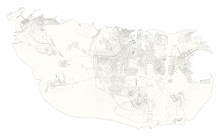 Image of the Maltese Archipelago as it appears on a world map - the star that marks the capital city almost covers the whole island.
Image of the Maltese Archipelago as it appears on a world map - the star that marks the capital city almost covers the whole island.Capital: Valletta
Area: 316 km2
Population: 413,609
Population Density: 1,298/km2 (6th)
Sicily: 93km North
Tunisia: 288km West
Religion: 98% Roman Catholic
Independence from the UK: 21 September 1964
EU Accession: 1 May 2004
Official Languages: Maltese, English
Ethnic Groups: Maltese 95.3%, British 1.6%, other 3.1%
Malta is a tiny island of seemingly insignificant size, unknown to most of the world, yet it was once fought over because of its strategic position at the centre of the Mediterranean. This resulted in its being colonised by numerous empires: Carthaginians, Romans, Arabs, Normans, Sicilians, Knights of St.John, French and British, each leaving its own mark on the islands and their people.
‘Sunny Malta’ is mostly known as a cheap, English-speaking package-holiday destination yet less known is that it is the 6th most densely populated country in the world and home to the world’s oldest freestanding structures.
Ninety-eight percent of the population is Roman Catholic (thanks to St.Paul for famously being shipwrecked on the island), making the nation one of the most Catholic countries in the world, yet they praise ‘Alla’ meaning God in Maltese - which is an Arabic dialect, the only official language of the EU that is defined as semitic and the only semitic language that is written in the latin alphabet. Maltese and English were recognised as official languages when they replaced Italian in 1934, making for a bilingual country in which 86% of the population prefer to speak Maltese, 12% English, and 2% Italian.

: ) nicely described...
ReplyDeleteI would suggest : “by numerous entities: Carthaginians, Romans, Arabs, Normans, Sicilians, the Knights of St. John, the French and the British – each one leaving its own mark on the land and its people. Their presence – some short, some long – derived primarily from either colonization or from occupation during which there was a degree of intermarriage with the islanders and consequential settlement and family building. In addition the troubles within or between countries bordering the Mediterranean resulted in an influx of émigrés, refugees and asylum seekers, all evidenced by the variety of Maltese surnames of English, Italian, Sicilian and Arabic origin and to a lesser extent of French, Spanish, Greek and even German and Russian ones.
ReplyDeleteIt would perhaps be quite appropriate to consider the Maltese as being the ultimate true present day representative of “Mediterranean man”.